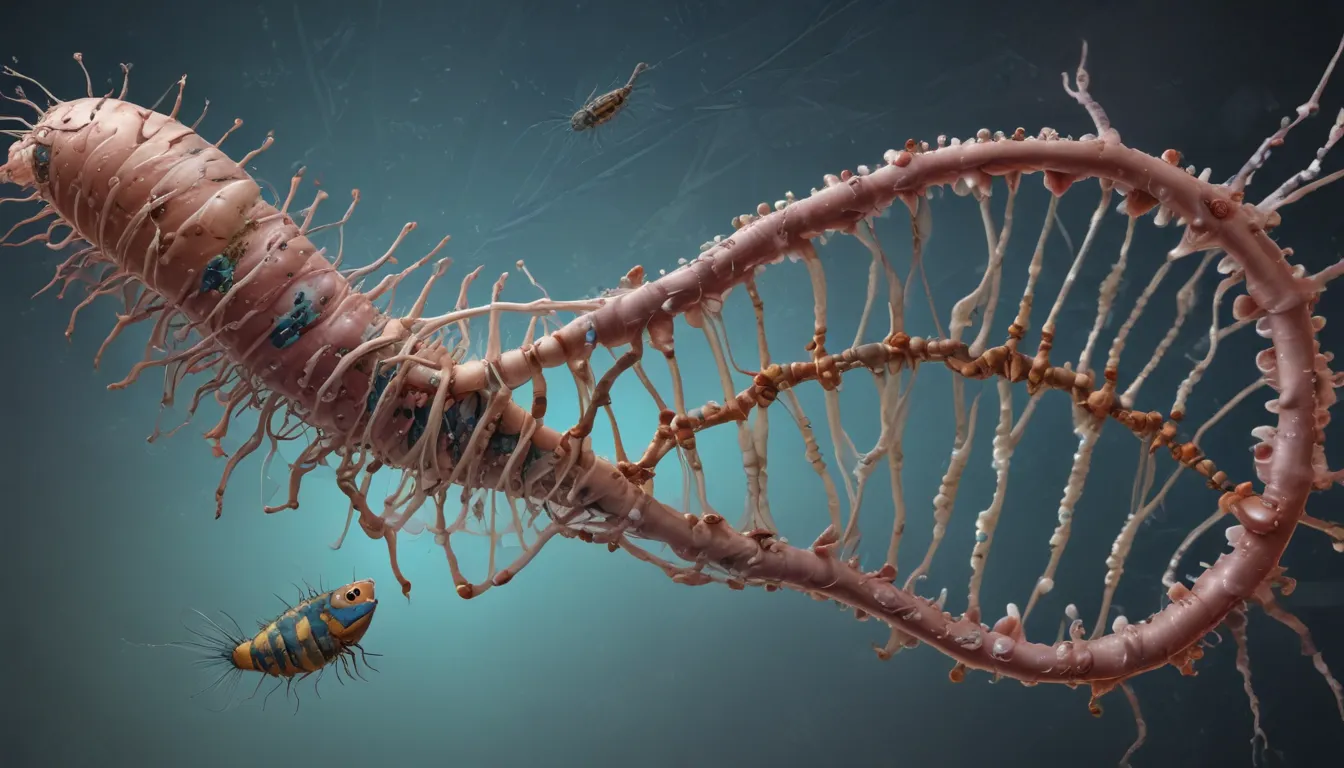A Note About Images: The images used in our articles are for illustration purposes only and may not exactly match the content. They are meant to engage readers, but the text should be relied upon for accurate information.
In the realm of biology, gene transfer plays a pivotal role in the evolution and adaptation of organisms. While vertical gene transfer, the transmission of genetic material from parent to offspring, is well-documented, there exists another captivating process known as horizontal gene transfer (HGT). Unlike vertical gene transfer, HGT involves the exchange of genetic material between different species that are not directly related. This phenomenon has been observed in a wide array of organisms, ranging from bacteria to plants, animals, and even humans.
Unveiling the Enigma of Horizontal Gene Transfer
Horizontal gene transfer is a mechanism that enables the sharing of genetic material among diverse organisms, influencing their evolution and genetic diversity in unexpected ways. From viruses to bacteria, and even humans, genes can be exchanged through HGT, challenging conventional notions of species evolution.
The Diversity of Horizontal Gene Transfer
-
HGT Occurs Between Distinct Species: Horizontal gene transfer is not limited to vertical transmission and can transpire between species that are genetically unrelated. This transfer can transpire among bacteria, archaea, and eukaryotes.
-
Different Mechanisms of HGT: HGT can manifest through various mechanisms, including transformation (uptake of free DNA), transduction (DNA transfer via viruses), and conjugation (direct transfer of genetic material).
-
Viruses as Vectors: Viruses serve as vectors in facilitating HGT by transferring genetic material between different organisms, from bacteria to higher organisms.
Implications of Horizontal Gene Transfer
-
Antibiotic Resistance: HGT is a major contributor to the rapid dissemination of antibiotic resistance among bacteria. It enables the transfer of resistance genes between different species, complicating the treatment of bacterial infections.
-
Evolution of Prokaryotes: HGT has significantly impacted the evolution of bacteria and archaea, allowing them to acquire novel genes and thrive in diverse environments.
-
Beneficial Trait Transfer: HGT can transfer beneficial traits between organisms, enhancing their adaptability and survivability in changing surroundings.
The Fascinating Role of HGT
-
Essential Genes: Not only accessory genes but also essential genes can be horizontally transferred, contributing to the genetic diversity of species.
-
Bidirectional Transfer: HGT is not a one-way process; genetic material can flow in both directions between participating organisms.
-
Applications in Genetic Engineering: HGT has found applications in genetic engineering, enabling the introduction of specific genes into target organisms and the creation of genetically modified organisms (GMOs).
The Complexity of HGT
-
Genetic Diversity and Evolution: HGT fosters genetic diversity among species, aiding in their adaptation and evolution over time.
-
Hybridization: In certain instances, HGT can lead to the hybridization of different species, resulting in the emergence of new species with distinctive genetic characteristics.
-
Impacts on Virulence: HGT can facilitate the transfer of virulence factors between pathogens, increasing their pathogenicity and disease-causing potential.
Exploring the Continuity of HGT
HGT has been a driving force in the evolution of various organisms for billions of years, influencing the course of life’s evolution across different species.
The Human Connection to HGT
Even the human microbiome, composed of trillions of bacterial cells, is not immune to HGT, with genetic material being exchanged between diverse bacterial species.
The Unpredictability of HGT
Genes, gene clusters, and even entire genomes can be horizontally transferred, reshaping the genetic landscape of recipient organisms.
The Evolutionary Ramifications
The occurrence of HGT challenges traditional tree of life models, blurring the boundaries between different branches of evolution and questioning established evolutionary relationships.
Embracing the Astonishing Complexity of Life
Horizontal gene transfer’s astounding facts illuminate its critical role in shaping the genetic tapestry of diverse organisms, transcending conventional evolutionary paradigms and guiding scientific inquiry into the interconnectedness of life.
Continuing the Journey of Exploration
As the study of horizontal gene transfer progresses, it unveils new possibilities for genetic engineering, disease treatment, and environmental preservation. By delving into the mysteries of this intricate process, researchers can gain valuable insights into organisms’ adaptive capacities and evolutionary trajectories.
FAQs: Navigating the World of HGT
Q: What is horizontal gene transfer?
A: Horizontal gene transfer is a process through which organisms acquire genetic material from unrelated species, influencing the spread of advantageous traits and playing a critical role in species evolution.
Q: How does horizontal gene transfer occur?
A: HGT can occur via transformation (uptake of free DNA), transduction (DNA transfer via viruses), and conjugation (direct genetic material exchange between bacteria).
Q: What are the implications of horizontal gene transfer?
A: HGT has implications in rapid species evolution, antibiotic resistance dissemination, GMO development, and potential gene therapy applications.
Q: Is horizontal gene transfer common?
A: While more prevalent in prokaryotes like bacteria, HGT also occurs in eukaryotes like plants and animals, albeit less frequently.
Q: How does horizontal gene transfer impact evolution?
A: HGT accelerates evolutionary processes by facilitating the acquisition of new traits, leading to the emergence of novel species and adaptation to changing environments.
Horizontal gene transfer unveils captivating genetic phenomena, reshaping our understanding of evolution and genetic diversity. Explore how this intricate process alters DNA dynamics, influences species evolution, and fosters cellular communication. Delve deeper into the captivating world of biology!






